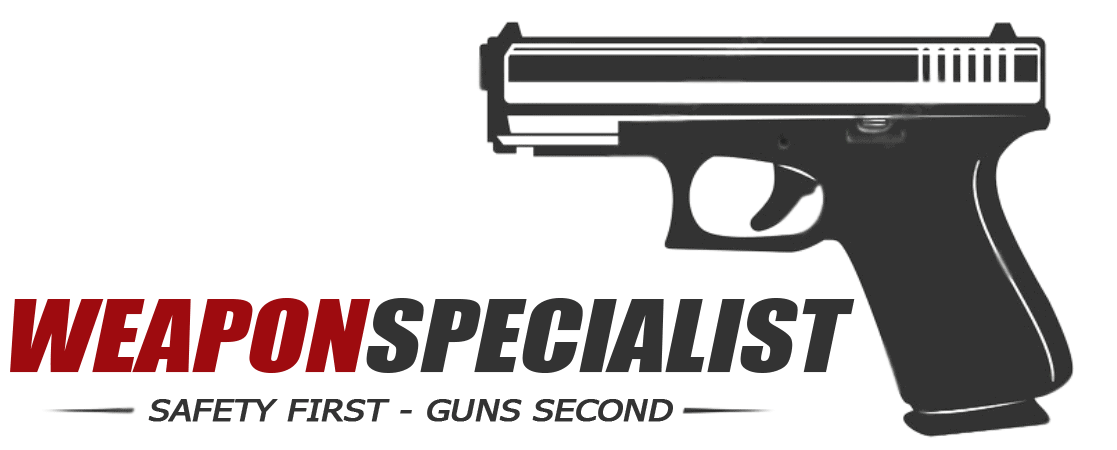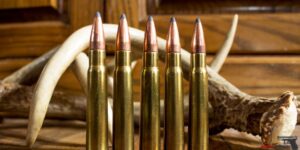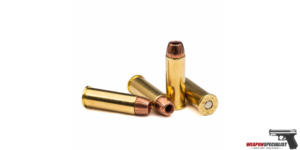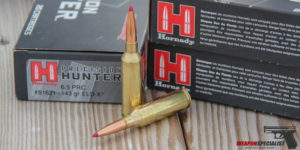When it comes to choosing between the 5.56 vs 308, gun enthusiasts and hunters alike have long debated which is the better caliber.
The 5.56, also known as the .223 Remington, was developed in response to the military’s need for a lower recoil battle rifle/carbine. On the other hand, the .308 Winchester cartridge is a capable rifle round, firing much heavier bullets with almost double the case capacity.
One of the primary differences between the two calibers is their stopping power. While bigger caliber bullets are generally expected to have better stopping power, that is not always the case.
The 5.56 round has better barrier penetration when compared to the initial design of the .223 Remington, but it does not compare to the raw penetrating power of a 147 grain bullet fired from a .308 Winchester chambered rifle.
The range of the two calibers is also a point of comparison. The .308 has much better range than the 5.56, with a combat effective range of up to 1000 yards compared to the 400-500 yards of the 5.56.
However, the 5.56 is more versatile in terms of rifle selection, with AR-15 style rifles being extremely popular. In this article, Weapon Specialist will take a closer look at the differences between the two calibers to help you determine which one is best for your needs.
What is 5.56 Caliber?
The 5.56 caliber refers to a specific ammunition size commonly used in firearms. It is also known as the 5.56x45mm NATO. The term “caliber” generally refers to the diameter of the bullet or the bore of a firearm, but it can be a bit misleading in this case.
The 5.56x45mm NATO round has a bullet diameter of 5.56 millimeters (0.218 inches), hence the name. It was developed by the North Atlantic Treaty Organization (NATO) as a standard cartridge for military rifles.
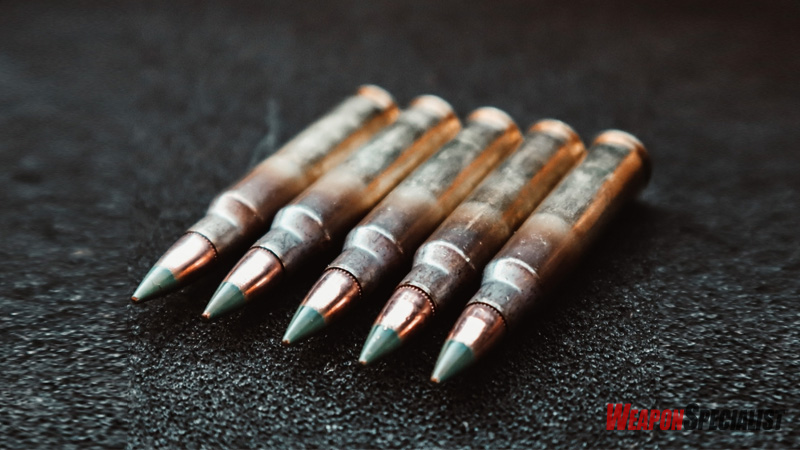
The 5.56 caliber ammunition is widely used in military and civilian rifles, such as the M16 and its variants. It is known for its relatively high velocity and flat trajectory, which can provide better long-range accuracy compared to some other ammunition types.
| Ammunition Type | Bullet Weight (grains) | Muzzle Velocity (fps) | Muzzle Energy (ft-lbs) |
|---|---|---|---|
| M193 | 55 | 3,240 | 1,282 |
| M855 | 62 | 3,020 | 1,255 |
| M855A1 | 62 | 3,025 | 1,260 |
| MK318 | 62 | 2,925 | 1,180 |
| MK262 | 77 | 2,720 | 1,260 |
| Hornady TAP | 75 | 2,840 | 1,281 |
What is .308 Winchester?
The .308 Winchester, also commonly referred to as 7.62x51mm NATO, is a popular centerfire rifle cartridge. It was introduced in 1952 by Winchester and quickly gained popularity for both military and civilian use.
The .308 Winchester cartridge has a bullet diameter of .308 inches (7.82mm), and it is essentially a civilian version of the 7.62x51mm NATO round used by military forces.
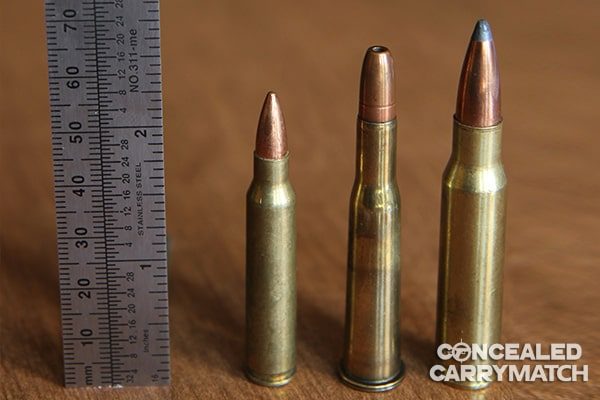
The dimensions and performance of the .308 Winchester and 7.62x51mm NATO are very similar, although there can be slight differences in chamber specifications and pressure levels between rifles chambered for each cartridge.
The .308 Winchester is widely used in various hunting rifles and sporting firearms. It offers good accuracy, manageable recoil, and versatility for a range of applications, including big game hunting, target shooting, and military and law enforcement operations.
It has become one of the most popular rifle cartridges worldwide due to its performance and availability of firearms chambered for it.
| Bullet Weight (grains) | Muzzle Velocity (fps) | Muzzle Energy (ft-lbs) |
|---|---|---|
| 125 | 2,800 | 2,543 |
| 150 | 2,820 | 2,648 |
| 165 | 2,800 | 2,619 |
| 168 | 2,650 | 2,619 |
| 175 | 2,630 | 2,701 |
| 180 | 2,625 | 2,676 |
| 185 | 2,580 | 2,666 |
| 190 | 2,560 | 2,682 |
| 200 | 2,470 | 2,526 |
Quick 5.56 vs .308 Comparison Table
| Aspect | 5.56 Caliber | .308 Winchester |
|---|---|---|
| Bullet Diameter | 5.56mm (0.218 inches) | 7.82mm (0.308 inches) |
| Cartridge Length | 45mm (1.77 inches) | 51mm (2.01 inches) |
| Typical Use | Military rifles, civilian rifles | Hunting rifles, sporting firearms |
| Muzzle Velocity | Varies depending on rifle and load | Varies depending on rifle and load |
| Trajectory | Flatter trajectory at shorter distances | Slightly more pronounced bullet drop at range |
| Recoil | Generally lighter recoil | Heavier recoil |
| Magazine Capacity | Can typically hold more rounds due to smaller size | Generally holds fewer rounds |
| Effective Range | Best suited for shorter to medium-range engagements | Suitable for medium to long-range shooting |
| Penetration Power | Moderate penetration power | High penetration power |
| Bullet Weight Range | Typically lighter bullets, e.g., 55-77 grains | Typically heavier bullets, e.g., 150-180 grains |
| Ballistic Performance | Higher velocity, flatter trajectory, lower recoil | Slower velocity, more bullet energy, heavier recoil |
Historical Background
The development of the .556 and .308 cartridges has a rich history that dates back to the mid-20th century.
The .308 cartridge was developed in the 1950s as a hunting cartridge and was later adopted by the U.S. Military for use in the M14 rifle during the Vietnam War.
The .556 cartridge, on the other hand, was developed in the early 1960s as a replacement for the .308 cartridge in the M16 rifle.
The .308 cartridge was designed by Winchester Repeating Arms in 1952 and was based on the .300 Savage cartridge. It was initially called the .30-51, but it was later renamed the .308 Winchester.
The cartridge was designed for use in hunting rifles and was later adopted by the U.S. Military for use in the M14 rifle.
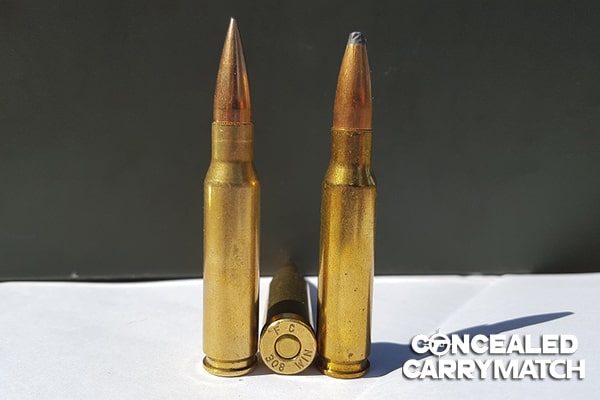
The .556 cartridge was developed by Eugene Stoner, Robert Fremont, and L. James Sullivan of the Fairchild ArmaLite Corporation in the early 1960s.
The cartridge was designed to be used in the ArmaLite AR-15 rifle, which later became the M16 rifle. The .556 cartridge was designed to be smaller and lighter than the .308 cartridge, which would allow soldiers to carry more ammunition.
During the Vietnam War, the U.S. Military used both the M14 rifle, which fired the .308 cartridge, and the M16 rifle, which fired the .556 cartridge.
The M14 rifle was a heavy and bulky weapon, while the M16 rifle was lightweight and easy to carry. The M16 rifle quickly became the preferred weapon of U.S. soldiers in Vietnam.
Today, the AR platform is one of the most popular rifles in the world, and it owes its success to the development of the .556 and .308 cartridges.
The AR-15 rifle is the civilian version of the M16 rifle, and it is widely used for hunting, target shooting, and self-defense. The AR-10 rifle, which fires the .308 cartridge, is also a popular choice for hunters and target shooters.
FN Herstal, a Belgian firearms manufacturer, is one of the largest suppliers of small arms to the U.S. Military. They produce the M240 machine gun, which fires the .308 cartridge, and it is widely used by the U.S. Army and other NATO countries.
The M240 is a versatile weapon that can be used for a variety of tasks, including infantry support, vehicle-mounted firepower, and base defense.
5.56 vs .308 Technical Specifications
Bullet Weights
| Ammunition | Weight per round (grains) |
|---|---|
| 5.56 | 55 |
| .308 | 150 |
When comparing .308 and 5.56 cartridges, one of the most significant differences is the bullet weight.
The .308 cartridge typically has a bullet weight between 150 and 180 grains, while the 5.56 cartridge has a lighter bullet weight of around 55 grains.
This difference in bullet weight affects the trajectory, accuracy, and stopping power of the round.
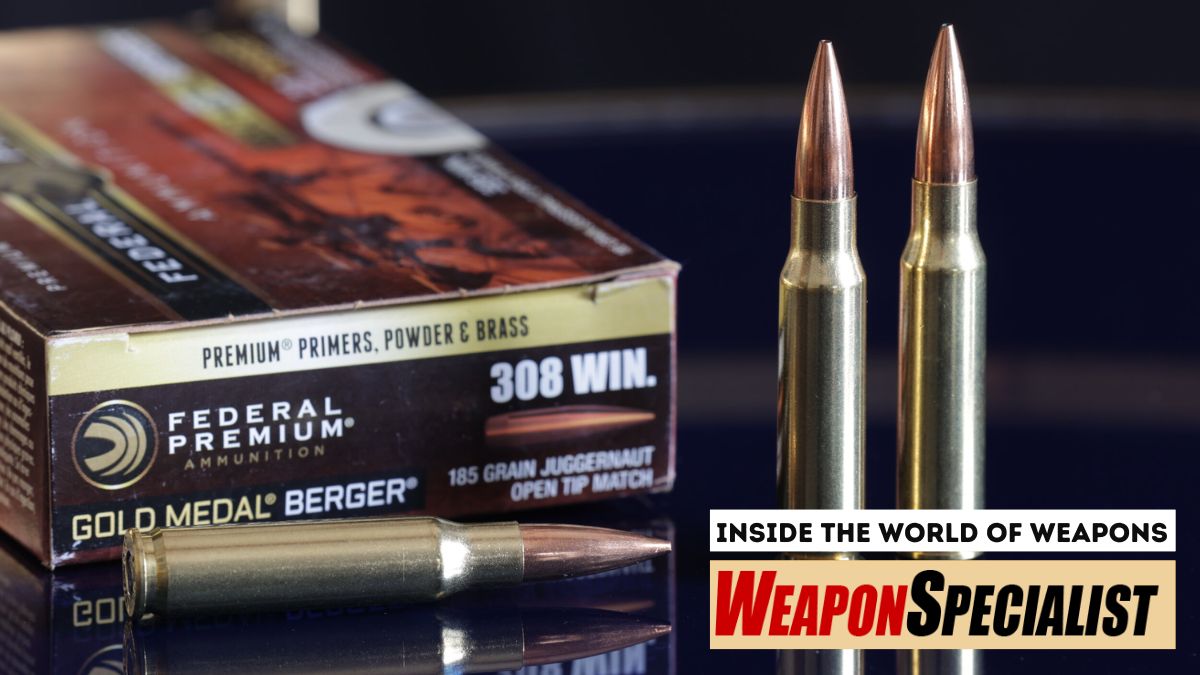
Case Length and Capacity
| Cartridge | Case Length (inches) | Case Capacity (grains of water) |
|---|---|---|
| 5.56mm NATO | 1.76 | 26.3 |
| .308 Winchester | 2.015 | 56.0 |
Another difference between the two cartridges is the case length and capacity. The .308 cartridge has a longer case length of 2.015 inches and a larger case capacity of 56.0 grains of water.
In contrast, the 5.56 cartridge has a shorter case length of 1.76 inches and a smaller case capacity of 28.5 grains of water.
This difference in case length and capacity affects the amount of powder that can be loaded into the cartridge, which in turn affects the velocity and energy of the bullet.
Barrel Length
The barrel length of a rifle also affects the performance of the cartridge. A longer barrel typically results in higher muzzle velocity and energy.
The .308 cartridge performs best with a barrel length of 20-24 inches, while the 5.56 cartridge performs best with a barrel length of 16-20 inches.
Muzzle Energy
| Cartridge | Muzzle Energy (Joules) | Muzzle Energy (Foot-Pounds) |
|---|---|---|
| 5.56 NATO | 1,754 J | 1,294 ft-lbs |
| .308 Winchester | 3,820 J | 2,820 ft-lbs |
Muzzle energy is the energy of the bullet as it leaves the barrel of the rifle. The .308 cartridge has a higher muzzle energy than the 5.56 cartridge due to its heavier bullet and larger case capacity.
The .308 cartridge typically has a muzzle energy of 2,500-3,000 foot-pounds, while the 5.56 cartridge has a muzzle energy of around 1,300 foot-pounds.
Chamber Pressure
| Cartridge | Chamber Pressure (PSI) |
|---|---|
| 5.56 NATO | 55,000 – 62,000 |
| .308 Win | 52,000 – 62,000 |
Chamber pressure is the pressure generated by the burning powder inside the cartridge as it is fired. The .308 cartridge has a higher chamber pressure than the 5.56 cartridge due to its larger case capacity and heavier bullet.
The .308 cartridge typically has a chamber pressure of 62,000 PSI, while the 5.56 cartridge has a chamber pressure of around 55,000 PSI.
In summary, the .308 cartridge is a larger and heavier cartridge with a longer case length and larger case capacity, resulting in a higher muzzle energy and chamber pressure.
The 5.56 cartridge is a smaller and lighter cartridge with a shorter case length and smaller case capacity, resulting in a lower muzzle energy and chamber pressure.
When choosing between the two cartridges, it is important to consider the intended use and the specific rifle being used.
5.56 vs .308 Performance Analysis
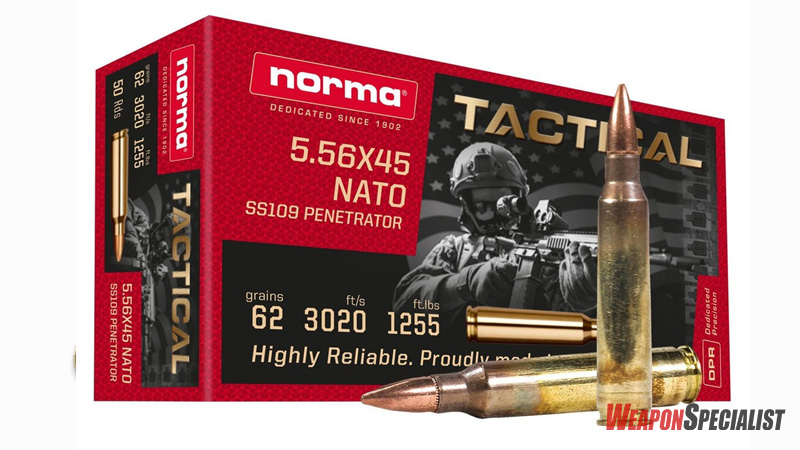
Range
| Cartridge | Effective Range (Yards) |
|---|---|
| 5.56mm | 600-800 |
| .308 Win | 800-1000 |
When it comes to range, the .308 Win has a clear advantage over the 5.56 NATO. The .308 is a larger, heavier round that is capable of traveling longer distances with greater accuracy. On the other hand, the 5.56 NATO is a lighter round with a shorter effective range.
Recoil
5.56mm: The 5.56mm NATO round is commonly used in rifles such as the AR-15 platform. It is known for its relatively mild recoil compared to larger calibers. Here’s a qualitative assessment of the recoil:
- Low to moderate recoil: The recoil is generally manageable and easily controllable, making it suitable for most shooters.
- Light push or sharp snap: The recoil impulse is often described as a quick, snappy jolt or a gentle push.
.308 Winchester (7.62x51mm NATO): The .308 Winchester is a larger caliber commonly used in rifles like the AR-10 or bolt-action rifles. It delivers significantly more energy than the 5.56mm, resulting in increased recoil. Here’s a qualitative assessment of the recoil:
- Moderate to heavy recoil: The recoil is noticeably stronger compared to the 5.56mm, requiring more effort to control, especially in lightweight firearms.
- Strong push or solid thump: The recoil impulse can be felt as a solid, forceful push or a thump against the shoulder.
Stopping Power
The .308 Win has a higher stopping power than the 5.56 NATO. It is a larger, heavier round that can take down larger game or incapacitate a target more effectively. However, the 5.56 NATO is still a potent round that can be effective in certain situations.
Effective Range
| Cartridge | Effective Range (Meters) | Effective Range (Yards) |
|---|---|---|
| 5.56mm | 400-600 | 437-656 |
| .308 | 800-1,000 | 875-1,094 |
The effective range of a firearm is the distance at which it can reliably hit a target. The .308 Win has a longer effective range than the 5.56 NATO, making it a better choice for long-range shooting. However, the 5.56 NATO is still effective at shorter ranges.
Flatter Trajectory
| Distance (yards) | 5.56mm Trajectory (inches) | .308 Winchester Trajectory (inches) |
|---|---|---|
| 0 | -1.5 | -1.5 |
| 100 | +1.8 | +2.5 |
| 200 | +2.5 | +2.4 |
| 300 | +0.0 | -3.6 |
| 400 | -8.8 | -11.4 |
| 500 | -25.5 | -26.4 |
| 600 | -52.0 | -49.7 |
| 700 | -89.2 | -80.2 |
| 800 | -139.1 | -122.4 |
| 900 | -203.4 | -177.5 |
| 1000 | -284.2 | -249.3 |
Note: The values represent the bullet’s trajectory in inches above (+) or below (-) the line of sight at the specified distance. Negative values indicate the bullet is below the line of sight, while positive values indicate it is above the line of sight.
In general, the 5.56mm cartridge experiences a flatter trajectory compared to the .308 Winchester. This is due to factors such as the higher muzzle velocity and lighter weight of the 5.56mm bullet, which results in less bullet drop over distance. However, it’s important to consider that trajectory can be influenced by various factors, including barrel length, bullet weight, environmental conditions, and individual loadings, among others.
Ballistic Performance
The ballistic performance of a round refers to its ability to maintain velocity and accuracy over long distances. The .308 Win has superior ballistic performance compared to the 5.56 NATO, making it a better choice for long-range shooting.
Overall, the 308 vs 556 debate comes down to personal preference and the intended use of the firearm.
While the .308 Win has a clear advantage in terms of range, stopping power, and ballistic performance, the 5.56 NATO is still a potent round that can be effective in certain situations.
By understanding the differences between the two rounds, shooters can make an informed decision and have confidence in shooting their firearm.
5.56 vs .308 Usage Scenarios
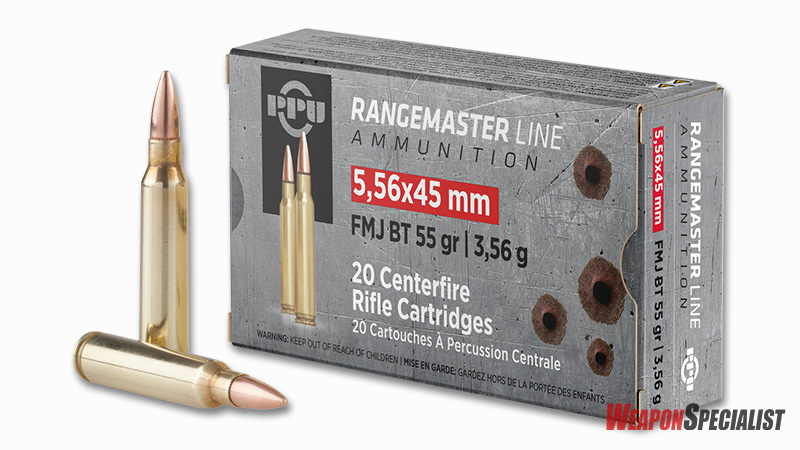
When it comes to choosing between .556 and .308, it’s important to consider the usage scenarios. Here are some of the most common scenarios where these cartridges are used:
Hunting
For hunters, the choice between .556 and .308 largely depends on the type of game they are hunting. The .308 Winchester is a popular hunting round for big game hunting, while the .556 is better suited for smaller game.
When hunting situations require quick follow-up shots, the .556 is a great option due to its low recoil and high magazine capacity. However, for big game hunting, the .308 is the better option due to its powerful and accurate performance.
Home Defense
When it comes to home defense, both the .556 and .308 can be effective options. However, the .556 is generally considered to be a better choice due to its lower recoil, higher magazine capacity, and lighter weight.
In defensive situations, quick follow-up shots can be crucial, and the .556’s lower recoil allows for faster and more accurate shooting.
Target Shooting
For target shooting, both the .556 and .308 are popular choices. The .308 is a versatile cartridge that can be used in a variety of handguns, semi-automatic rifles, and bolt-action rifles.
It is a great choice for target practice and precision shooting due to its excellent accuracy and long-range capabilities. On the other hand, the .556 is a popular choice for tactical departments and rifle shooting tips due to its low recoil and high magazine capacity.
Competitions
When it comes to competitions, the choice between .556 and .308 largely depends on the type of competition. For target shooting competitions, the .308 is a popular choice due to its excellent accuracy and long-range capabilities.
However, for competitions that require quick follow-up shots, such as tactical competitions, the .556 is a better option due to its low recoil and high magazine capacity.
Overall, the choice between .556 and .308 largely depends on the specific usage scenario. Whether you’re a hunter, shooter, or competitor, it’s important to choose the cartridge that best fits your needs.
5.56 vs .308 Cost Analysis
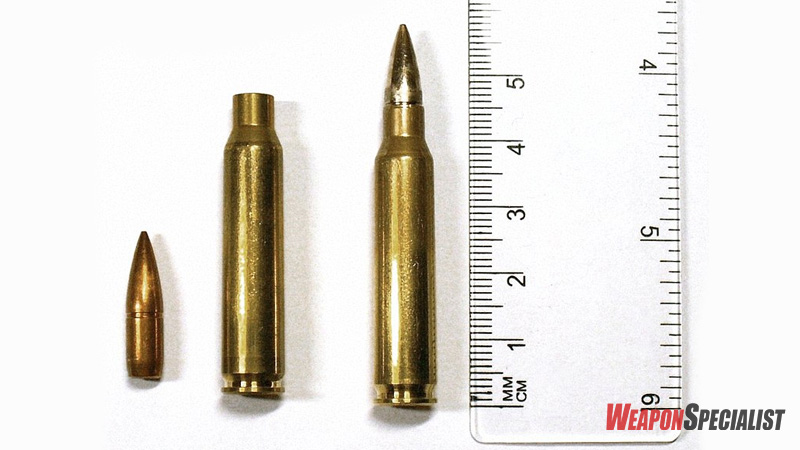
When comparing the .308 and .556 cartridges, one factor that cannot be ignored is the cost. The cost of ammunition can vary greatly depending on the brand, type, and quantity purchased.
In general, the .308 cartridge is more expensive than the .556 cartridge. This is because the .308 uses a larger bullet and more powder, which requires more material to produce. As a result, the cost per round of .308 ammunition is typically higher than that of .556 ammunition.
However, it is important to note that the cost of ammunition is not the only cost involved in shooting. Reloading supplies, such as brass, bullets, and powder, can also add to the overall cost.
Reloading can be a cost-effective option for those who shoot frequently, as it allows for the reuse of brass and the ability to customize loads to specific needs. However, reloading requires an initial investment in equipment and supplies, which can be expensive.
In addition to the cost of ammunition and reloading supplies, there may be other costs involved in shooting, such as range fees, transportation costs, and equipment maintenance. It is important to take all of these costs into account when budgeting for shooting activities.
Overall, while the .308 cartridge may be more expensive than the .556 cartridge, there are other factors to consider when evaluating the cost of shooting.
By carefully considering all costs involved, shooters can make informed decisions about which cartridge is the best fit for their needs and budget.
Law Enforcement and Military Use for 5.56 vs .308
When it comes to law enforcement and military use, both the .308 and .556 calibers have been widely adopted. The choice of caliber depends on the specific mission and the type of engagement the operator expects to face.
For military use, the .556 caliber is the standard NATO cartridge, also known as the 5.56x45mm NATO cartridge. It has been used by NATO allies since the 1980s and is favored for its light weight, high velocity, and low recoil. The .556 caliber is commonly used in rifles such as the M16 and M4.
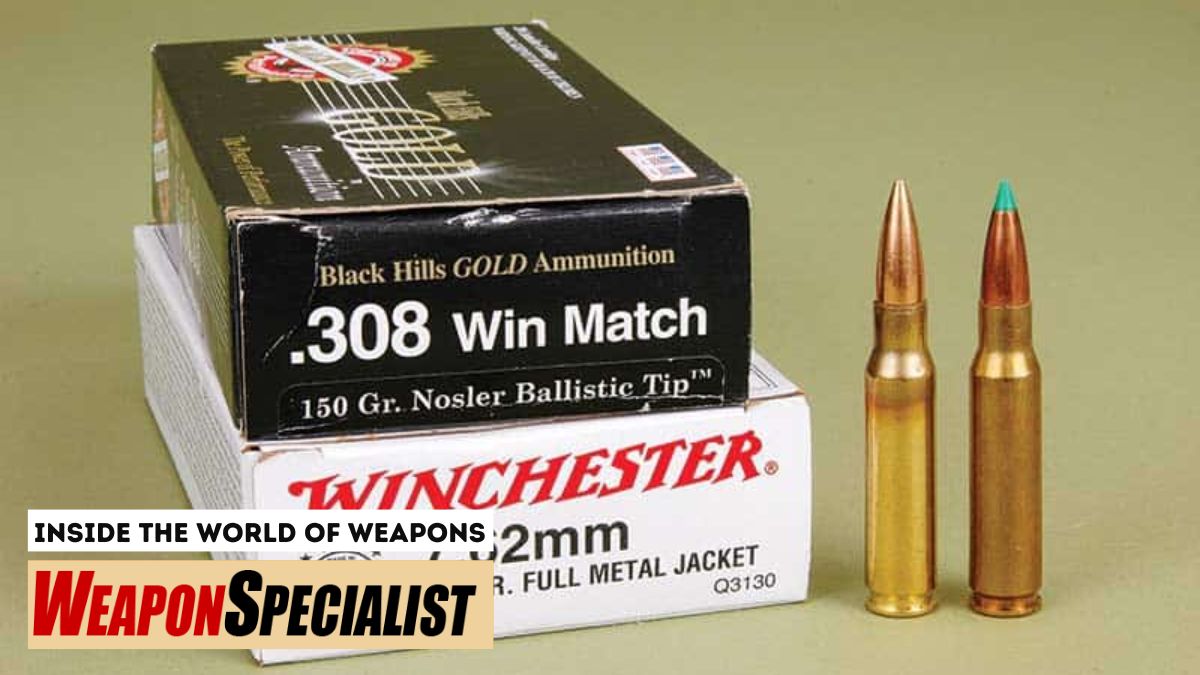
Law enforcement agencies also commonly use the .556 caliber in their rifles. This is due to its accuracy and stopping power, which is important for situations where officers may need to engage targets at longer ranges.
However, some agencies also use the .308 caliber for certain situations, such as when a higher level of penetration is needed.
The .308 caliber, also known as the 7.62×51 NATO, is favored by some military units and law enforcement agencies for its longer range and higher stopping power.
It is commonly used in rifles such as the M14 and SR-25. The .308 caliber is also used for hunting and long-range shooting.
It is important to note that the .223 caliber is not the same as the 5.56x45mm NATO cartridge, and the .308 caliber is not the same as the 7.62×51 NATO.
While the two calibers may look similar, there are differences in chamber pressure and other factors that make them incompatible.
In summary, both the .556 and .308 calibers are widely used by law enforcement and military agencies. The choice of caliber depends on the specific mission and the type of engagement the operator expects to face.
5.56 vs .308 Reloading
Reloading ammunition is a great way to save money and customize your loads to your specific needs. Whether you are reloading .556 or .308, the process is similar.
Brass
When reloading, we recommend using high-quality brass. This will ensure consistent performance and longevity of your ammunition. We suggest using brass that has been fired only once, as this will reduce the likelihood of case head separation and other issues.
Bulk Ammo
If you are looking to reload in bulk, we suggest purchasing brass in bulk as well. This can save you a significant amount of money in the long run. However, it is important to ensure that the brass is of high quality and has been properly inspected before use.
Budget Reloading Supplies
Reloading can be an expensive hobby, but there are ways to save money on supplies. We suggest purchasing in bulk and looking for deals on reloading supplies. Additionally, you can save money by using less expensive powders and primers, as long as they are still of good quality.
Overall, reloading is a great way to save money and customize your loads to your specific needs. By using high-quality brass and other supplies, you can ensure consistent performance and longevity of your ammunition.
FAQs
Q: Which caliber is better for long-range shooting, .556 or .308?
When it comes to long-range shooting, the .308 is the clear winner. The .308 has a significantly longer effective range than the .556, with a range of up to 1000 yards compared to the .556’s range of 400-500 yards. This makes the .308 a better choice for snipers and other long-range shooters.
Q: What are the advantages and disadvantages of using .556 over .308?
The main advantage of using .556 over .308 is its lighter weight and lower recoil, which makes it easier to handle and shoot accurately.
However, the .556 has a shorter effective range and less stopping power than the .308, which can be a disadvantage in certain situations.
Q: What are the ballistics of .556 and .308?
The .556 has a higher velocity and flatter trajectory than the .308, which makes it more accurate at shorter ranges. However, the .308 has a higher ballistic coefficient and greater energy retention, which makes it more effective at longer ranges.
Q: How do the recoil and accuracy of .556 and .308 compare?
The .556 has less recoil than the .308, which makes it easier to handle and shoot accurately. However, the .308 is generally more accurate than the .556 due to its superior ballistics and greater energy retention.
Q: What are the most common uses for .556 and .308 calibers?
The .556 is commonly used in military and law enforcement applications, as well as for recreational shooting and hunting small game. The .308 is typically used for long-range shooting, hunting large game, and military sniping applications.
Conclusion
The choice between 5.56 and .308 ultimately comes down to personal preference and intended use.
For those looking for a lighter, more maneuverable rifle with a higher capacity magazine and effective range of about 600 yards, the 5.56 is a solid choice. It’s also more affordable and has less recoil, making it easier to shoot for extended periods of time.
On the other hand, if long-range accuracy and stopping power are the priorities, the .308 is the way to go. With a combat effective range of up to 1000 yards and significantly more energy and stopping power, it’s a favorite among police sniper units and long-range precision shooters.
It’s important to note that both calibers have their pros and cons, and there is no one-size-fits-all answer.
Ultimately, the decision between 5.56 and .308 comes down to the individual’s intended use, personal preferences, and budget.
Last Updated on November 21, 2023 by
